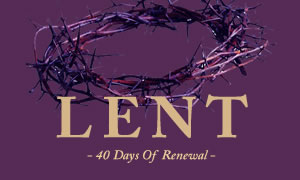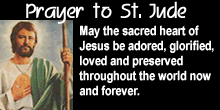


 Queen of Heaven is a title that was originally given to a number of pagan goddesses and then later applied by Christians, mainly Catholics to the Blessed Virgin Mary, and also, to some extent, in Eastern Orthodoxy, to whom the title is a consequence of the First Council of Ephesus in the fifth century, in which the Virgin Mary was proclaimed "theotokos", a title rendered in Latin as Mater Dei, in English "Mother of God".
Queen of Heaven is a title that was originally given to a number of pagan goddesses and then later applied by Christians, mainly Catholics to the Blessed Virgin Mary, and also, to some extent, in Eastern Orthodoxy, to whom the title is a consequence of the First Council of Ephesus in the fifth century, in which the Virgin Mary was proclaimed "theotokos", a title rendered in Latin as Mater Dei, in English "Mother of God".
The Catholic teaching on this subject is expressed in the papal encyclical Ad Caeli Reginam, issued by Pope Pius XII. It states that Mary is called Queen of Heaven because her son, Jesus Christ, is the king of Israel and heavenly king of the universe; indeed, the Davidic tradition of Israel recognized the mother of the king as the Queen Mother of Israel. The Eastern Orthodox Churches do not share the Catholic dogma, but themselves have a rich liturgical history in honor of Mary.
The title Queen of Heaven has long been a Catholic tradition, included in prayers and devotional literature, and seen in Western art in the subject of the Coronation of the Virgin, from the High Middle Ages, long before it was given a formal definition status by the Church.
Theological basis
Queen of Heaven (Latin Regina Caeli) is one of many Queen titles used of the Virgin Mary. The title derived in part from the ancient Catholic teaching that Mary, at the end of her earthly life, was bodily and spiritually assumed into heaven, and that she is there honored as Queen.
Pius XII explained on the theological reasons for her title of Queen in a radio message to Fatima of May 13, 1946, Bendito seja:
He, the Son of God, reflects on His heavenly Mother the glory, the majesty and the dominion of His kingship, for, having been associated to the King of Martyrs in the ... work of human Redemption as Mother and cooperator, she remains forever associated to Him, with a practically unlimited power, in the distribution of the graces which flow from the Redemption. Jesus is King throughout all eternity by nature and by right of conquest: through Him, with Him, and subordinate to Him, Mary is Queen by grace, by divine relationship, by right of conquest, and by singular choice [of the Father].
In his 1954 encyclical Ad caeli reginam ("To the Queen of Heaven"), Pius XII points out that Mary deserves the title because she is Mother of God, because she is closely associated as the New Eve with Jesus’ redemptive work, because of her preeminent perfection and because of her intercessory power. Ad caeli reginam states that the main principle on which the royal dignity of Mary rests is her Divine Motherhood. ... So with complete justice St. John Damascene could write: "When she became Mother of the Creator, she truly became Queen of every creature."
Biblical basis
In the Hebrew Bible, under some Davidic kings, the gebirah, the "Great Lady", usually the Mother of the King, held great power as advocate with the king. In 1 Kings 2:20, Solomon said to his Mother Bathsheba, seated on a throne at his right, "Make your request, Mother, for I will not refuse you." Fr. William G. Most sees here a sort of type of Mary.
In the New Testament, the title has several biblical sources. At the Annunciation, the archangel Gabriel announces that [Jesus] "... will be great, and will be called the Son of the Most High; and the Lord God will give to him the throne of his father David. He will rule over the house of Jacob forever and his reign will be without end."(Luke 1:32) The biblical precedent in ancient Israel is that the mother of the king becomes the queen mother. Mary's queenship is a share in Jesus’ kingship.
The Roman Catholic Church views Mary as the woman clothed with the sun in the Book of Revelation 12:1–3, and accepts Revelation 12 as a reference to Mary, Israel, and the Church as a three-fold symbolism through the Book of Isaiah and affirms Mary as the mother of Jesus as the prophetic fulfillment described in Revelation 12 (cf. Isaiah 7:14, 26:17, 54:1, 66:7).
Other titles
Other titles have been added to reflect modern scientific understanding. The Second Vatican Council in 1964 referred to Mary as Queen of the Universe. Section 59 of Lumen gentium, the Dogmatic Constitution on the Church from Vatican II, stated: "Finally, the Immaculate Virgin, preserved free from all guilt of original sin, on the completion of her earthly sojourn, was taken up body and soul into heavenly glory, and exalted by the Lord as Queen of the universe, that she might be the more fully conformed to her Son, the Lord of lords and the conqueror of sin and death." This reference came at a time during which space exploration was beginning.
The four ancient Marian antiphons of the Liturgy of the Hours express the Queenship of the Virgin Mary: the Salve Regina, the Ave Regina Caelorum, the Alma Redemptoris Mater, and the Regina Caeli. These are prayed at different times of the year, at the end of Compline.
The Queenship of Mary is commemorated in the last of the Glorious Mysteries of the Holy Rosary- the Coronation of the Virgin as Queen of Heaven and Earth.
The Virgin has been called “Queen of France” since 1638 when, partly in thanksgiving for a victory over the Huguenots and also in hope of the birth of an heir after years of childless marriage, Louis XIII officially gave her that title. Siena, Tuscany, hails the Virgin as Queen of Siena, and annually observes the race and pageant called the “palio” in her honor.
Feast of Queenship of Mary
Queenship of Mary is a Marian feast day in the liturgical calendar of the Roman Catholic Church, created by Pope Pius XII. On 11 October 1954, the Pontiff pronounced the new feast in his encyclical Ad caeli reginam. The feast was celebrated on May 31, the last day of the Marian month. The initial ceremony for this feast involved the crowning of the Salus Populi Romani icon of the Virgin Mary in Rome by Pius XII as part of a procession in Rome. The feast is a logical follow-up to the Assumption and is now celebrated on the octave day of that feast. In 1969, Pope Paul VI moved the feast day to August 22.
It has been placed eight days after the Solemnity of the Assumption, in order to emphasize the close bond between Mary's queenship and her glorification in body and soul next to her Son. The Second Vatican Council's Constitution on the Church states that "Mary was taken up body and soul into heavenly glory, and exalted by the Lord as Queen of the universe, that she might be the more fully conformed to her Son" (Lumen gentium, 59).


I have been thinking a great deal about my experience at Reconciliation this past Saturday. I felt an intense and unexplainable urge to go and confess my sins when I woke up that morning. I try to go every six weeks or so, but this was no routine visit to the priest for me. I needed to unburden myself of the numerous venial sins I had committed since I last participated in this Sacrament.
Purest Gold: God's Refining Fire in our Lives »
After salvation, many young Christians wonder if there's anything more to their newfound faith than just the security blanket of "being a Christian." Time and time again, God shows himself as a "refiner," and our lives are as gold. God started leading me in this study to understand what He was doing in my life, as well as in the lives of others.
Picking up my pen to write this column, I couldn’t imagine how time flies. Since the last publication of this column I have gone through a lot, especially the loss of my dear mother to whom I dedicate this article. Not only her, but seems I lost a whole generation of my close family.
How to Achieve Business Excellence »
“Do you see a man who excels in his work? He will stand before Kings; He will not stand before unknown men.” Proverbs 22:29
Spiritual Development for our Youth »
Most of us youth in today's fast moving world are easily thrown off by difficulties and worries.
The theme of conversion is a thread that runs all through Lent, but conversion takes on different aspects throughout the phases of Lent. The first two and a half weeks focused on the interior turning of hearts; the liturgy urges the faithful to reflect and examine consciences thoroughly.
Saint Josephine Bakhita »
Feast Day: February 8
Patron Saint Of: Sudan
Saint Josephine Margaret Bakhita was born around 1869 in the village of Olgossa in the Darfur region of Sudan. She was a member of the Daju people and her uncle was a tribal chief. Due to her family lineage, she grew up happy and relatively prosperous, saying that as a child, she did not know suffering.
Catholics Must Fast More Intensely This Lent»
The Norbertine Canons of St. Michael's Abbey have created this digital Lenten retreat so that you can journey through this holy season alongside them. If you want to have one of your best Lenten seasons yet, join us in our Lenten Program "The Great Fast" - https://theabbotscircle.com/the-great-fast-join
When Your Faith Is Put to the Test - Bishop Barron's Sunday Sermon»
Friends, we come now to the Second Sunday of Lent, and we’re on both dangerous and very holy ground with the first reading from the twenty-second chapter of Genesis. The ancient Israelites referred to it as the “Akedah,” which means the “binding”: Abraham binds and is ready to sacrifice Isaac at God’s command.

Copyright © 2002-2024 THE BEACON INTERNATIONAL CATHOLIC MAGAZINE. All rights reserved.
another mc.rufus interactive web design